Lake Biwa is in the middle of Shiga, itself the center of Japan.
Even lakes have a life span, apparently. While the average lifespan of a lake is several thousand years, there are some that have been in existence for more than 100,000 years, known as “ancient lakes.” There are only about 20 of these in the world, and one of them is here in Japan. Lake Biwa.
With an area of 670 square km and 27.5 billion tons of water flowing in from more than 400 rivers, it is the largest in Japan. Since its genesis 4 million years ago to the present, the lake has supported a diverse range of organisms, with some 2,400 species, including more than 60 endemic varieties.
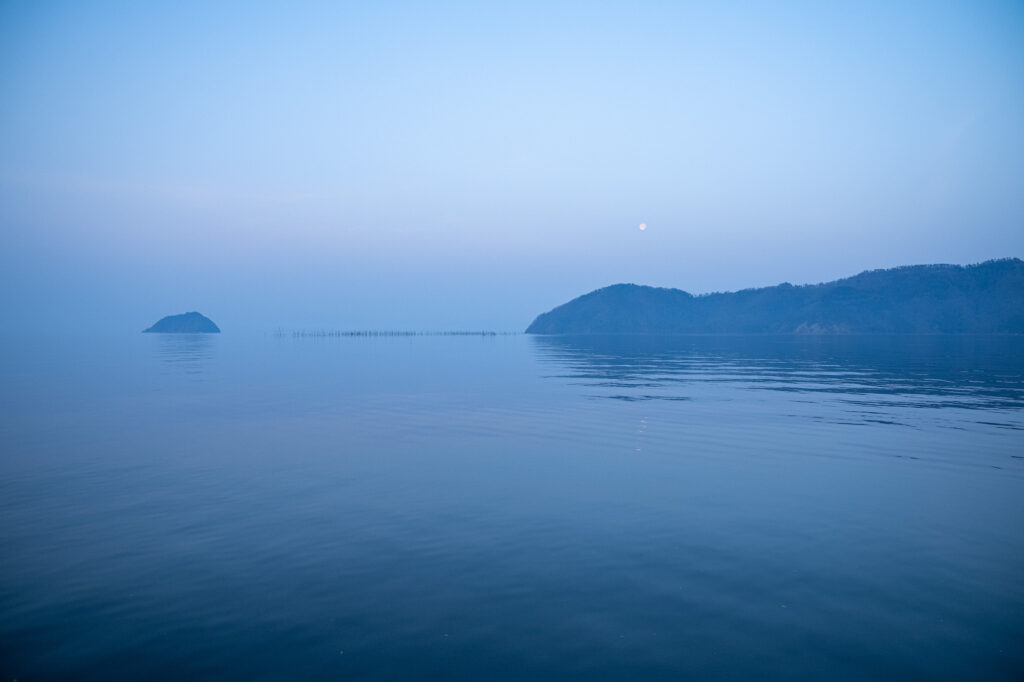
Humans began to settle in this area tens of thousands of years ago. Both Jōmon and Yayoi remains have been found at the bottom of the lake, and remains from the Kofun period (3rd-7th century) have been excavated from the Akanoi Bay site in Moriyama City, similar to the fishing method unique to Lake Biwa known as eri fishing (see below), which is still practiced today. People have long been living their lives while reaping the bounties of Lake Biwa.
Shiga Prefecture is not only a rare place in terms of having a globally significant natural environment right next to the world-famous tourist mecca of Kyoto, but also enjoys a rich natural environment at the interface of both the Japan Sea and the Pacific Ocean climates. Located in a basin, the prefecture varies in aspect from east to west and north to south. Driving or cycling along the contours of Lake Biwa – which is approximately 200 km in circumference – one can ascertain the ever-changing lakeshore landscape of sandy beaches, shingle reefs, and green reed beds.
“Lake Biwa System,” the symbiotic wisdom recognized as “World Agricultural Heritage”
This picturesque scenery of Lake Biwa was once nearly destroyed. In 1977, during the period of rapid economic growth, there was an outbreak of freshwater red tide, causing deterioration of the water supply and die-offs at fish farms. However, when it was discovered that phosphorus contained in synthetic detergents was the culprit, a movement to use soap powder instead of synthetic detergents was initiated by prefectural residents. In response, the Lake Biwa Ordinance (Shiga Prefecture’s Ordinance on the Prevention of Eutrophication of Lake Biwa) was enacted. This is the backdrop to the fact that Shiga Prefecture is considered one of the most environmentally advanced prefectures in Japan.
Then in 2022, the Lake Biwa System was recognized as a “World Agricultural Heritage Site” by the FAO (Food and Agriculture Organization of the United Nations). This recognizes the agriculture, forestry, and fisheries industries that have been handed down for more than a century. Also that these are interwoven with fishing and agriculture nurtured in the forest, village, and lake, and indicate the way in which Lake Biwa and people coexist. One specific example is “fish cradle paddies.” When the breeding season arrives, the nigorobuna (a species endemic to Lake Biwa) migrate upstream to spawn in the rice paddies near the lake where the water is warm, and plankton is abundant. In rice paddies where development has created a water level difference in the drainage channel, making it impossible for fish to climb up, artificial fish passageways have been installed. This is an initiative to preserve the life of Lake Biwa.
“Eri” (pouch) fishing is a unique “wait-and-see” method that has been practiced for more than 1,000 years, in which the fishermen do not catch more fish than are required. Then there is the “Fishermen’s Forest,” a tree-planting initiative by people involved in the fishing industry that has been undertaken since the Meiji era. These are also elements of the “Lake Biwa System. It is the people living in Lake Biwa who were the first to recognize that they are contributing to a sustainable environment for nature and people, and that this will ultimately translate back into their own futures.
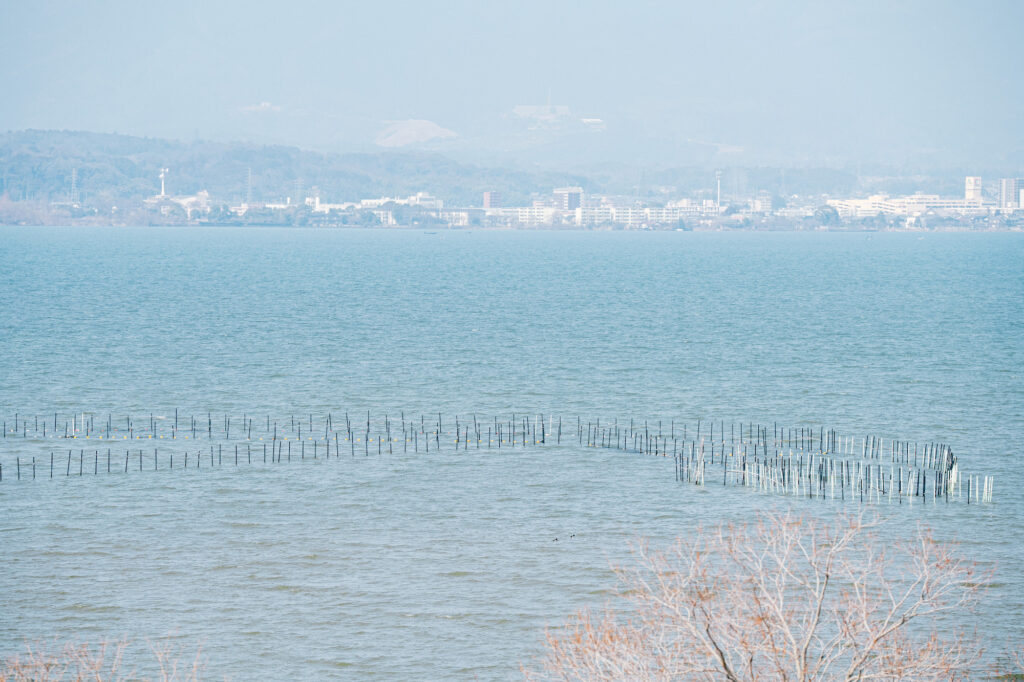
Water and fermentation are the buzzwords for Shiga’s food
Both average life expectancy and healthy life expectancy are among the highest in the country. According to the latest data (Life Span Tables by Prefecture, 2020, Ministry of Health, Labor and Welfare), the average life expectancy for males is 82.73 years, ranking first in Japan, while that for females is 88.26 years, ranking second. Their diet may be a not insignificant factor in the reason for their healthy longevity.
“Funasou,” which reopened this year, is a ryokan run by a family of fishermen in a prime location overlooking Lake Biwa. Yoshiki Matsuda and his son Yuki go fishing early in the morning from the nearby Onoe fishing port. They catch Nigorobuna in early spring, and Biwa trout in summer and fall. The inn serves up dishes using other fish snared by the “wait-and-see” tangle-net fishing method such as koayu, honmoroko (Gnathopogon caerulescens) and eel. Whether fresh sashimi or old-style fermented carp sushi (known as Funa-zushi) the fishermen themselves handle, prepare, and plate up the food.
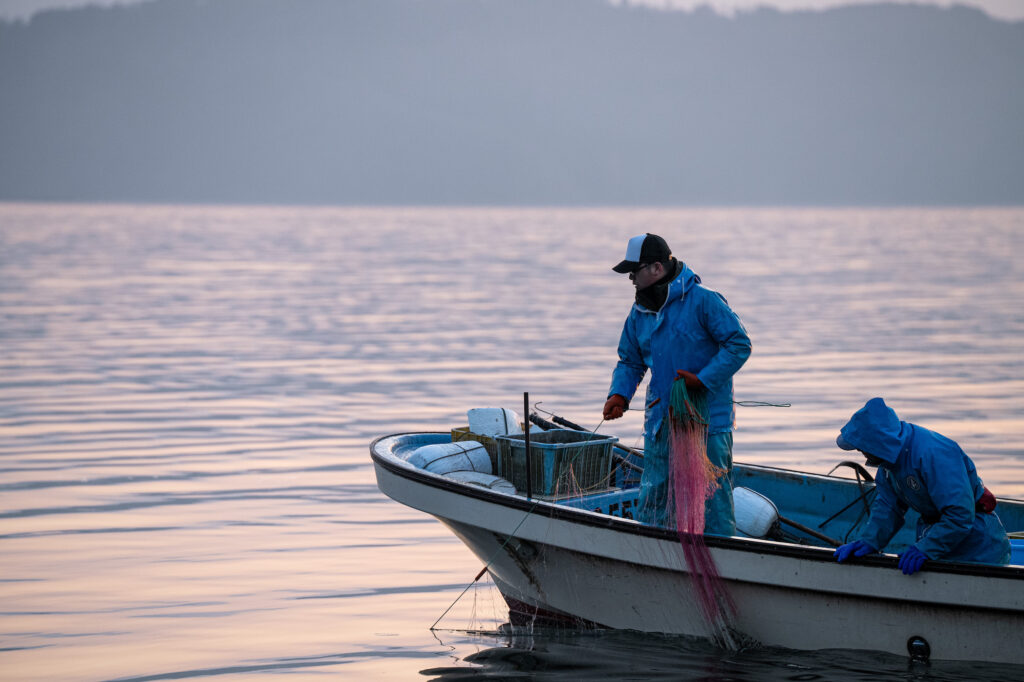
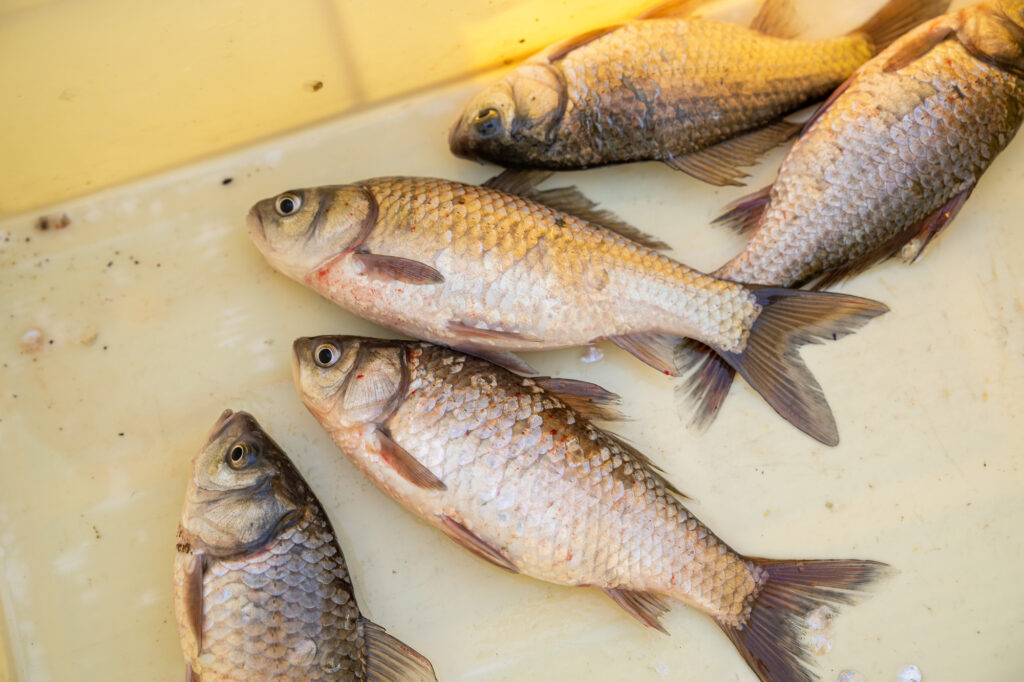
Funa-zushi is a local specialty made by fermenting salted nigorobuna with cooked white rice, and is said to be the oldest existing type of sushi. One person who has made this home-style dish, which was on the verge of decline 20 years ago and so instantly recognizable as a Shiga Prefecture specialty, is Mr. Hiroaki Tokuyama of Tokuyama Zushi.
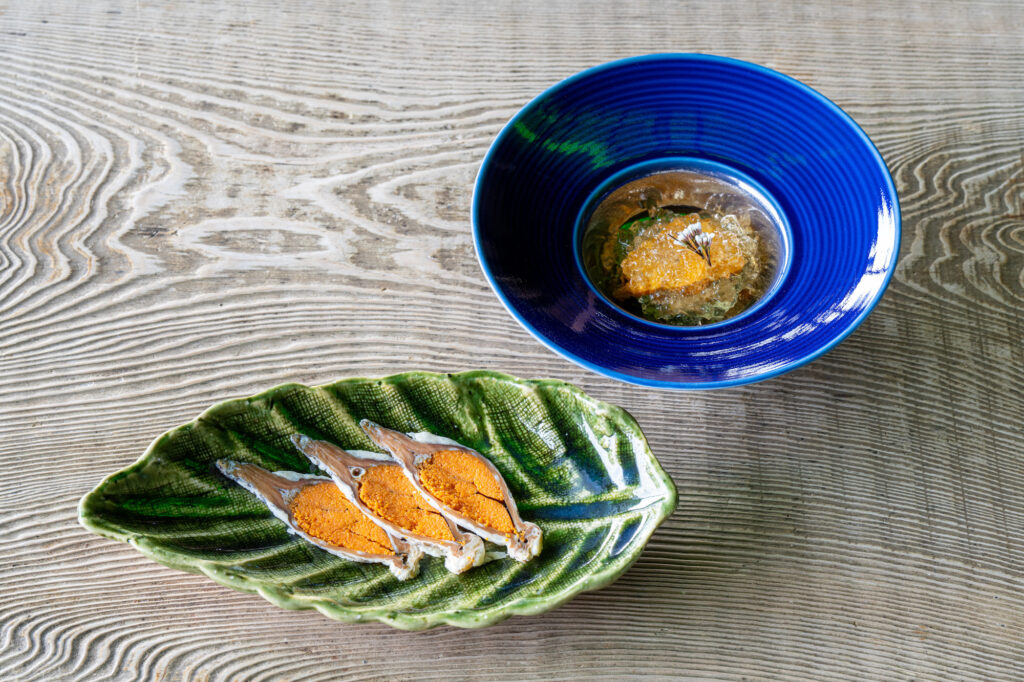
wine jus and cream cheese, it pairs well with wine.
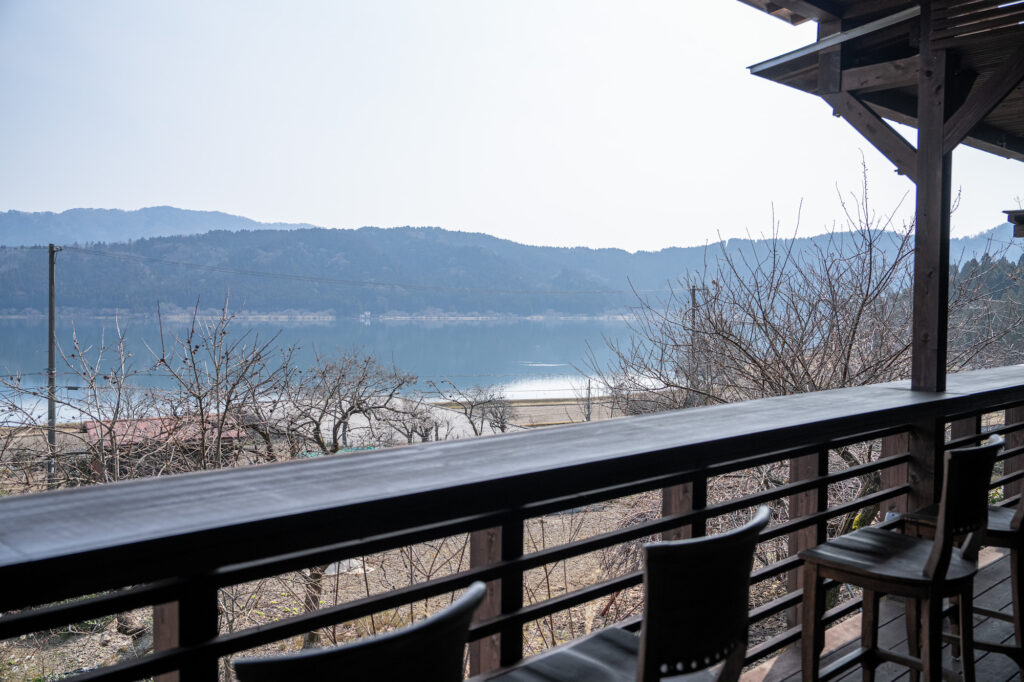
Fishing in the local sea, hunting in the local mountains, and cultivating the local fields to procure ingredients. The chef himself undertakes a series of local production for local consumption, and typical of the auberge style of entertaining guests, provides both lodgings and cuisine. Although they serve traditional cuisine, Tokuyama-zushi’s approach is cutting-edge. Or perhaps, on the contrary, it is a return to the origins. “Ingredients grown in the same water constitute a single course. Sake and rice are of course important, but above all, water is crucial.”
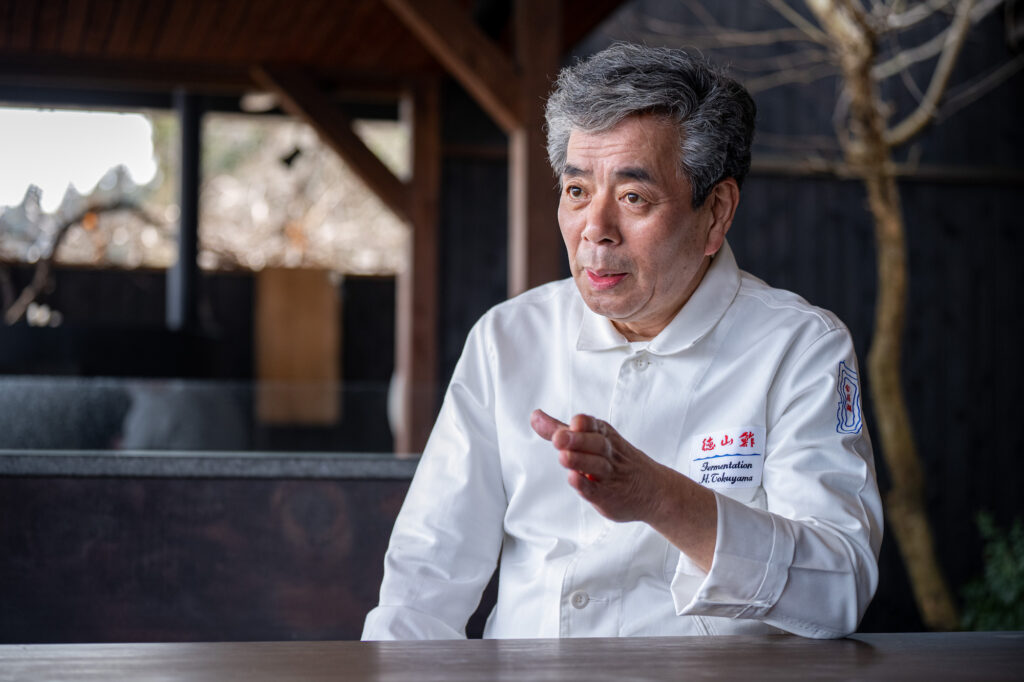
Zushi in 2004 after training at a ryotei in Kyoto.
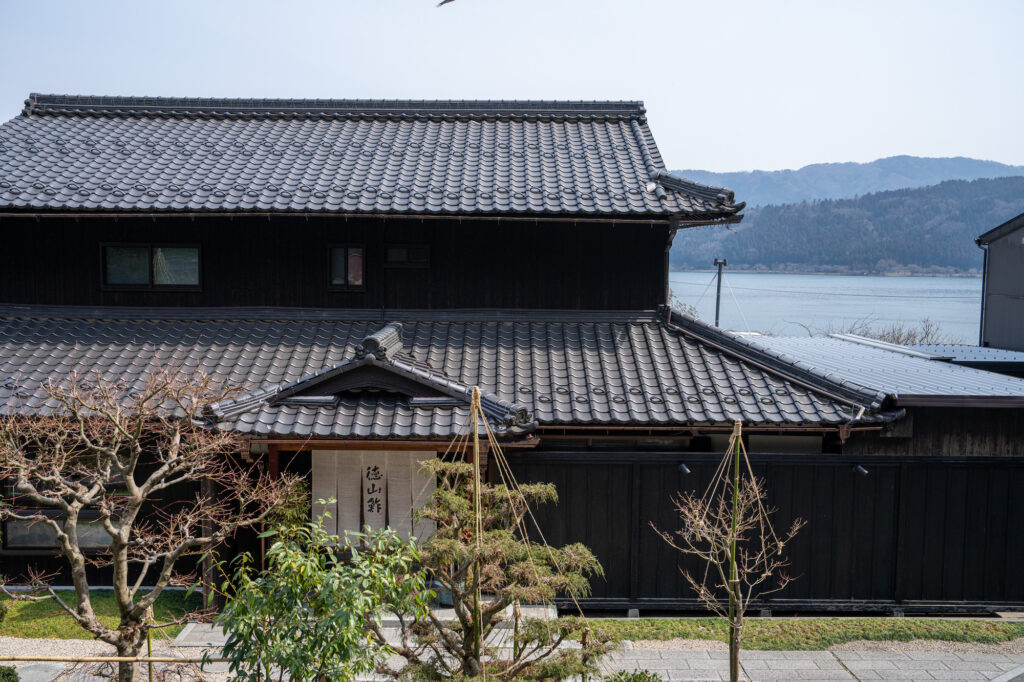
Kouji, miso, and sake – traditional foods produced by rice fermenting.
Omi Province is the former name of Shiga, and Omi rice is the blanket term for rice produced in Shiga Prefecture, regardless of the variety. Rice is produced where there is a spring of good quality water. Kouji and sake are made from high-quality rice produced from high-quality water.
Yasu City’s rice is so highly prized that in 1928, it was selected as the rice field dedicated to the Emperor Showa for the Daijō-sai Ceremony. “Kojiya Kichiuemon” has been producing rice malt here for about 180 years. Using locally grown rice and soybeans, they have pioneered additive-free fermented and processed foods such as malt, amazake, and miso as well as salt malt, soy sauce malt, and bread made with malt powder and malt seeds, responding to the needs of the market. Miso-making classes are held every day during the season, drawing in many repeat customers from far and wide.

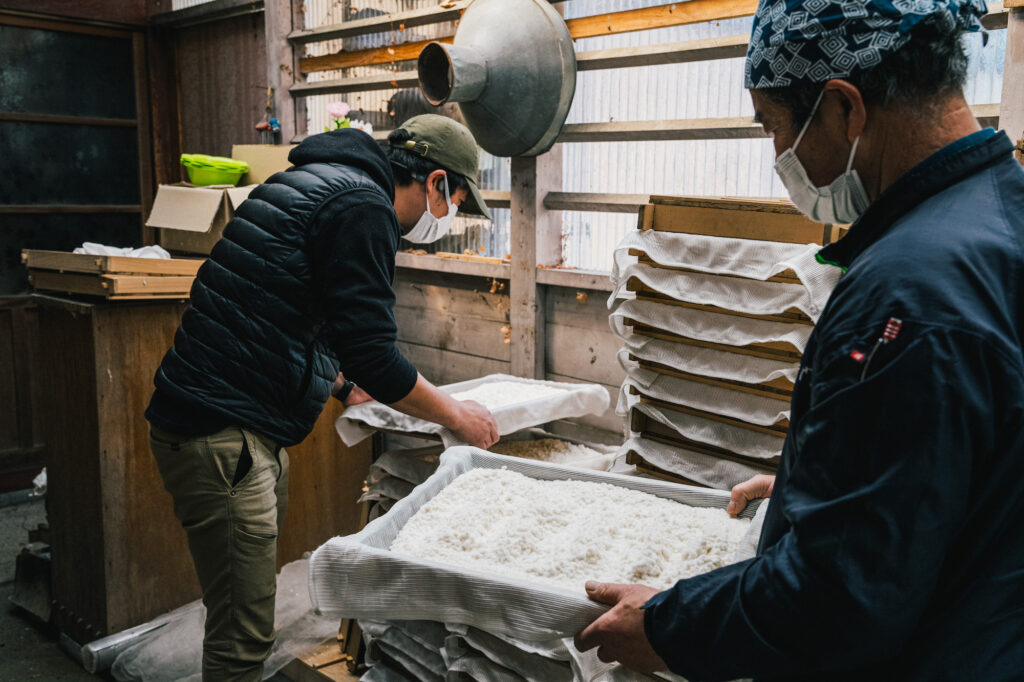
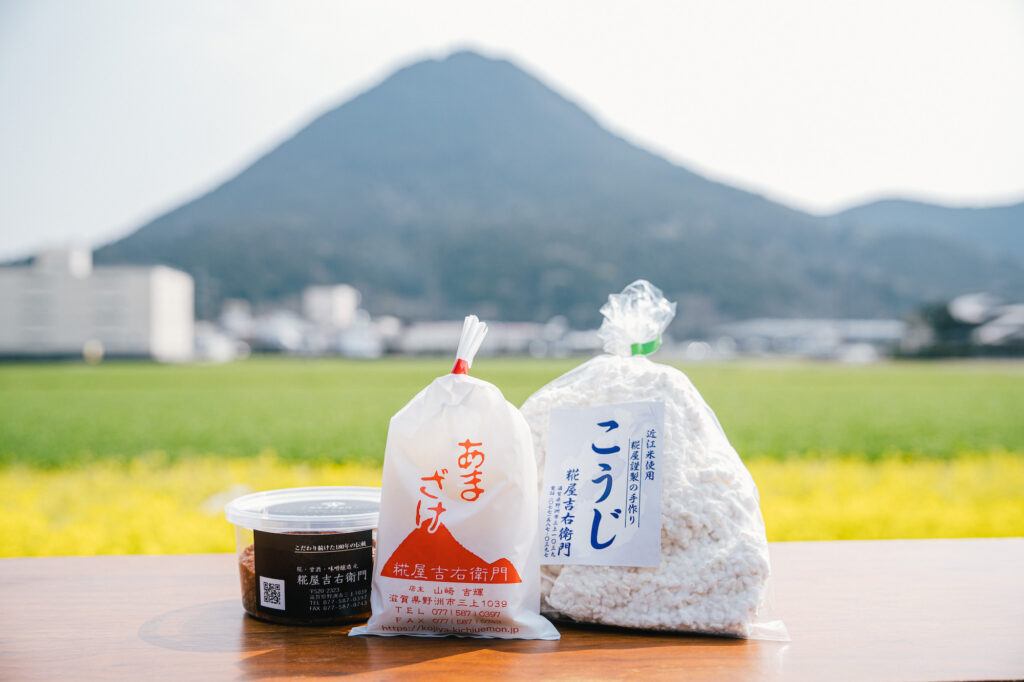
Fujii Honke is a long-standing sake brewery that dedicates sake for the Shinmai Festival to the Emperor and to shrines all over Japan. “We only use rice from Shiga Prefecture that is suitable for sake brewing,” proudly states the seventh-generation head of the Fujii family, Tetsuya Fujii.
He recommends sampling the brewing water drawn from the ground and explains, “Rain and snow that fell in the Suzuka mountain range soaks into the ground and reaches here over a period of about a hundred years.If you drink it with that in mind, it will give you an image of our feelings toward nature and what is going on beneath the unseen soil,” he explains.

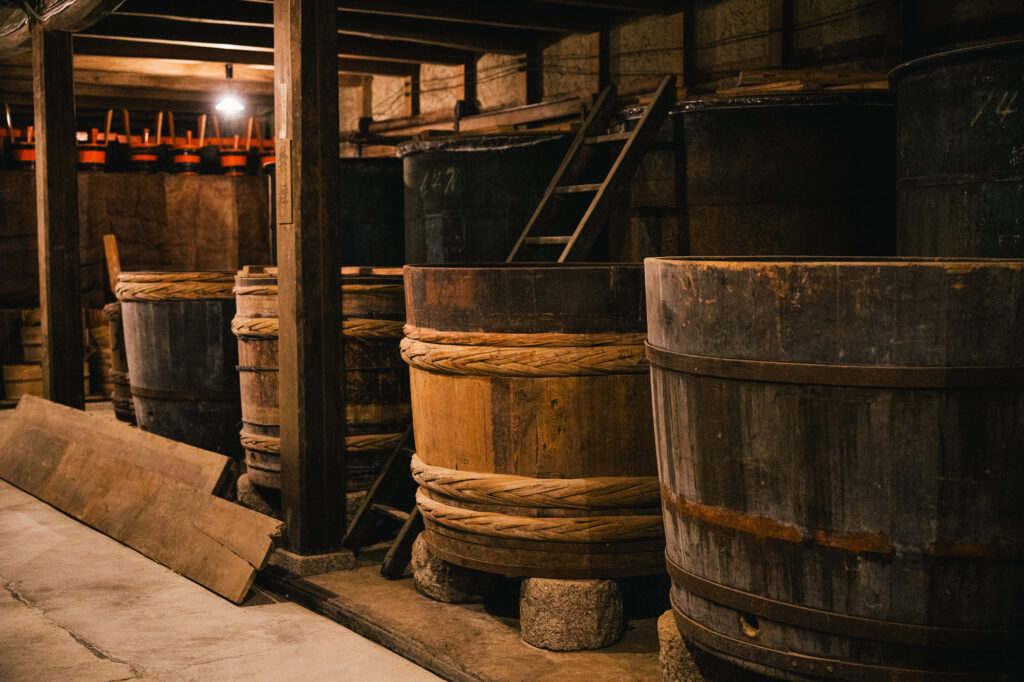
“People’s lives depend on the bounty of water. If the brewing industry is to be conducted in a traditional manner, I believe it must be inextricably linked to the local features and climate. That’s why we want to make the most of Omi’s climate as much as possible and impart that to our sake.”
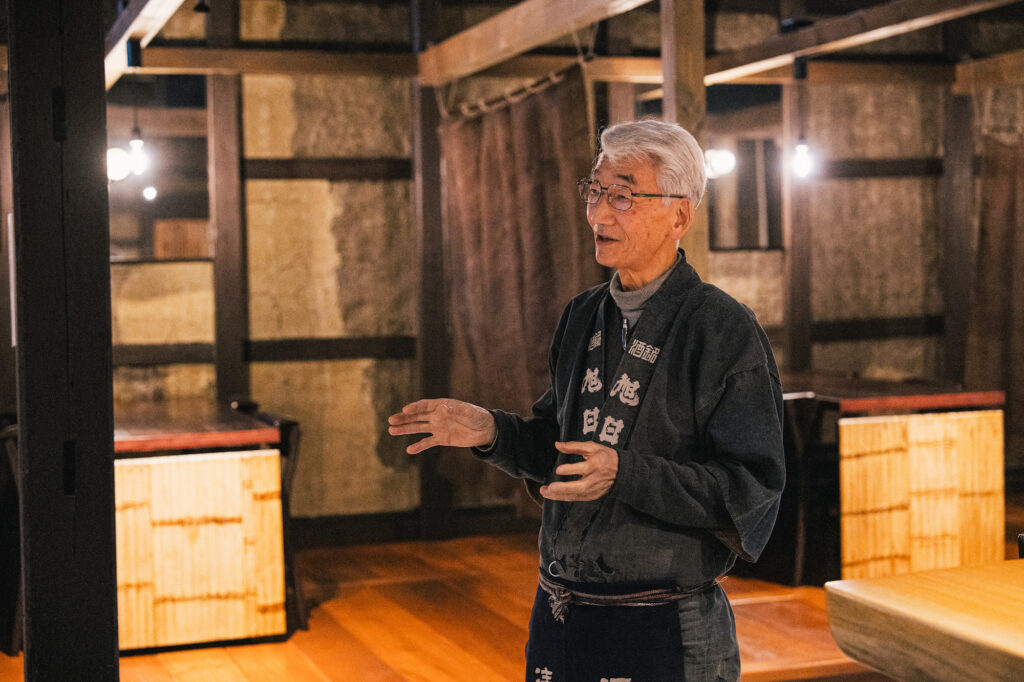
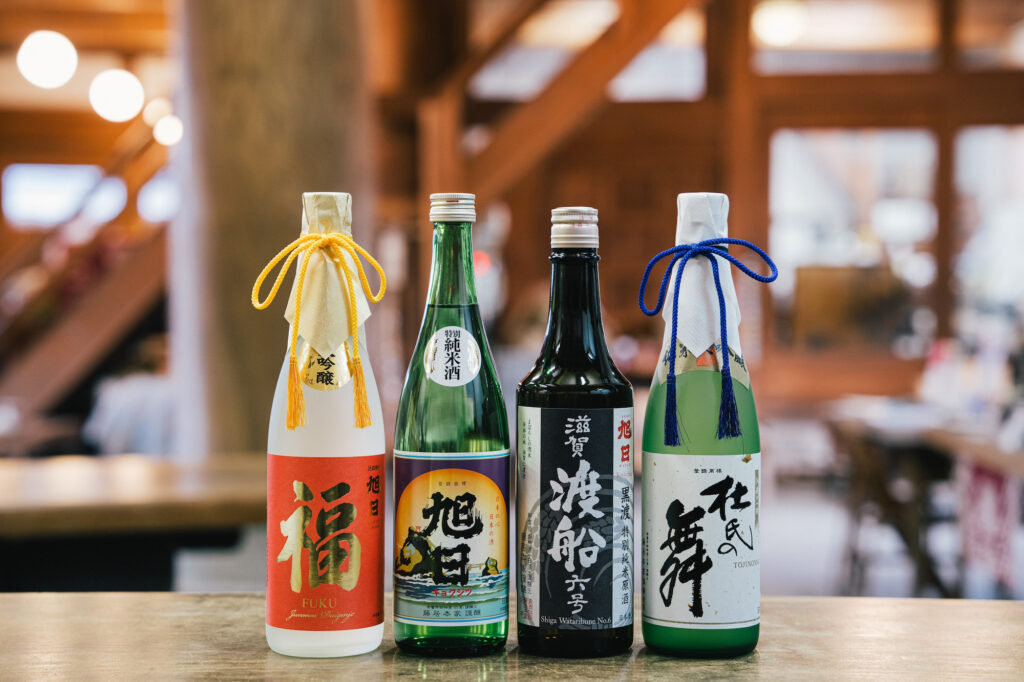
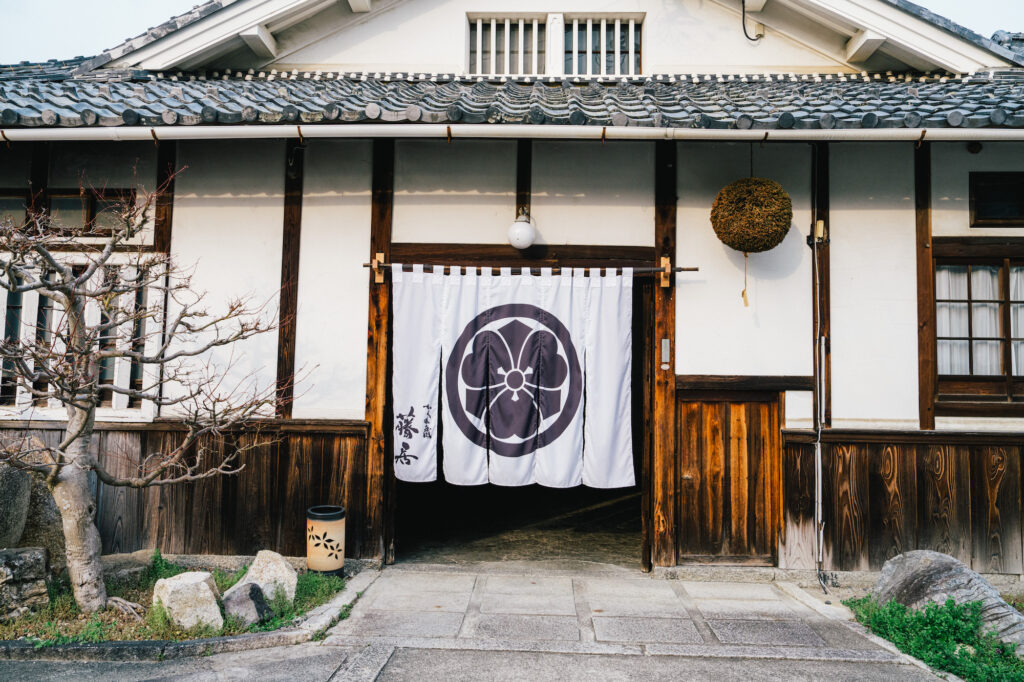
Water forges connections between nature and people, and people to people
Harie in Shin Asahi Town, Takashima City, is located northwest of Lake Biwa. Here, water and people’s lives are intertwined by spring water. Water springs from each of the approximately 100 houses in the village, and each house has a “kabata,” a cooking area that uses the water, and which was used in the past for washing and cooking. The water welling up in each house flows into a common waterway in the village, so the people upstream are considerate of the people downstream, and the people downstream are bound together by a “water of security” as the people upstream will not sully the water. Through such mutual consideration, they co-participate in the property of water.
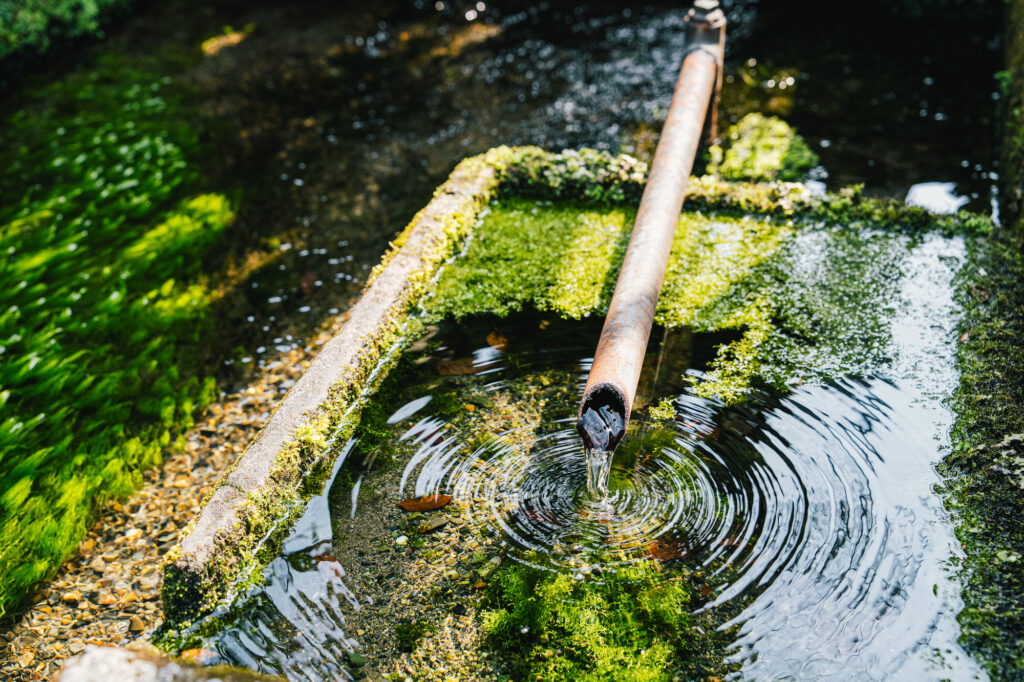
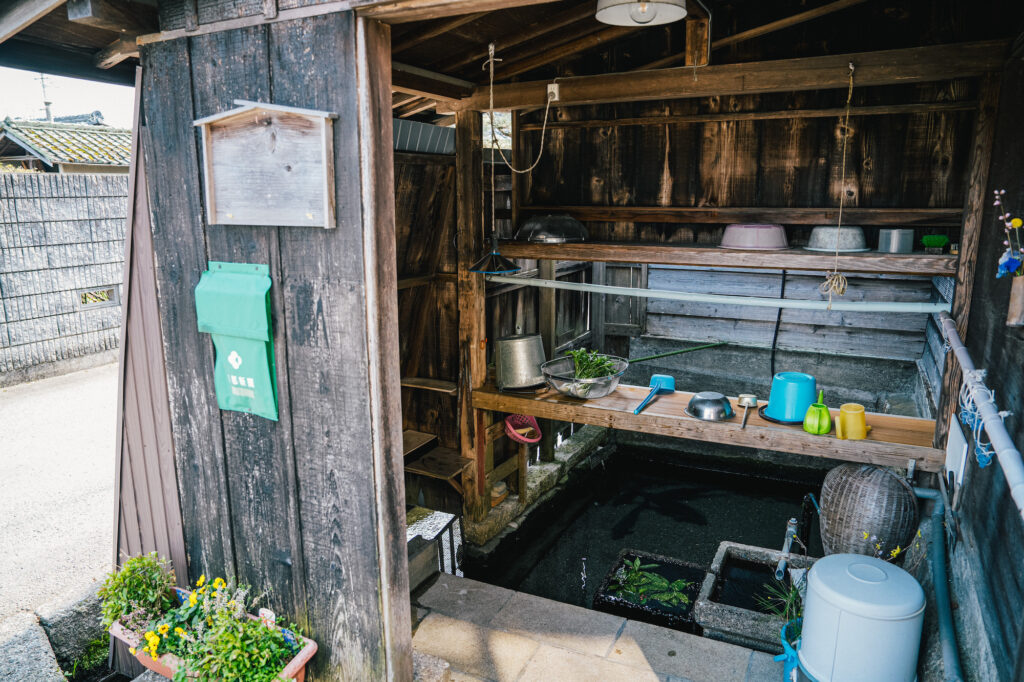
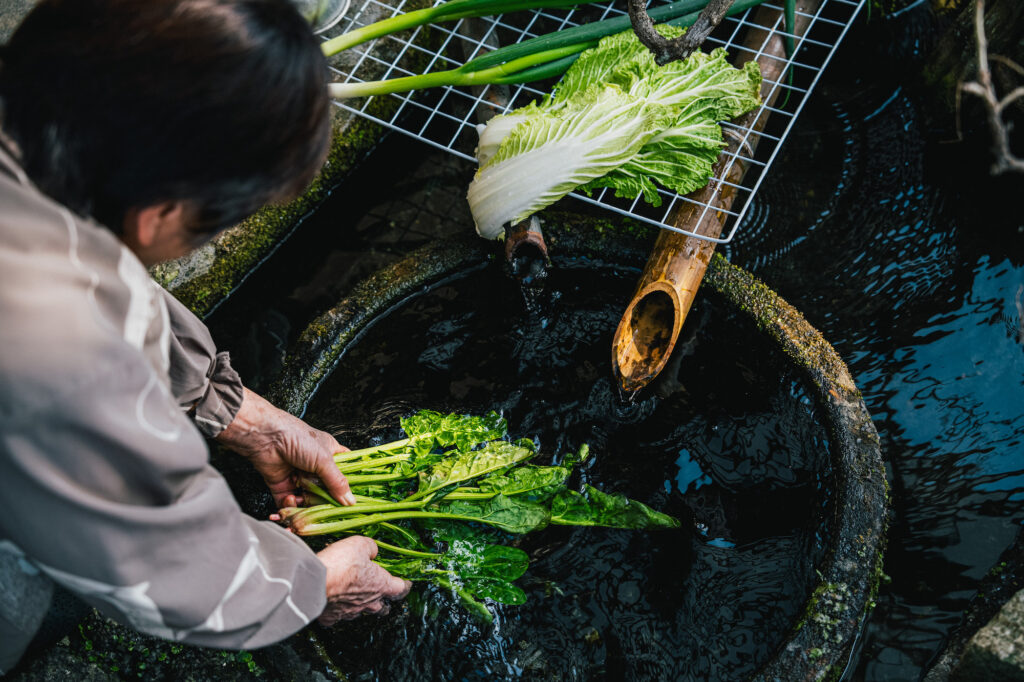
“The water from each house converges on the Harie-Okawa through a channel before emptying into Lake Biwa. It then flows down the Yodo River and eventually out to the Pacific Ocean. So the water we use is connected to the rest of the world. And again, water becomes vapor, clouds, rain and snow, and eventually returns here!”
A local who showed us around the village elaborates: “Using clean water is ultimately not for the benefit of others, but for your own good.”
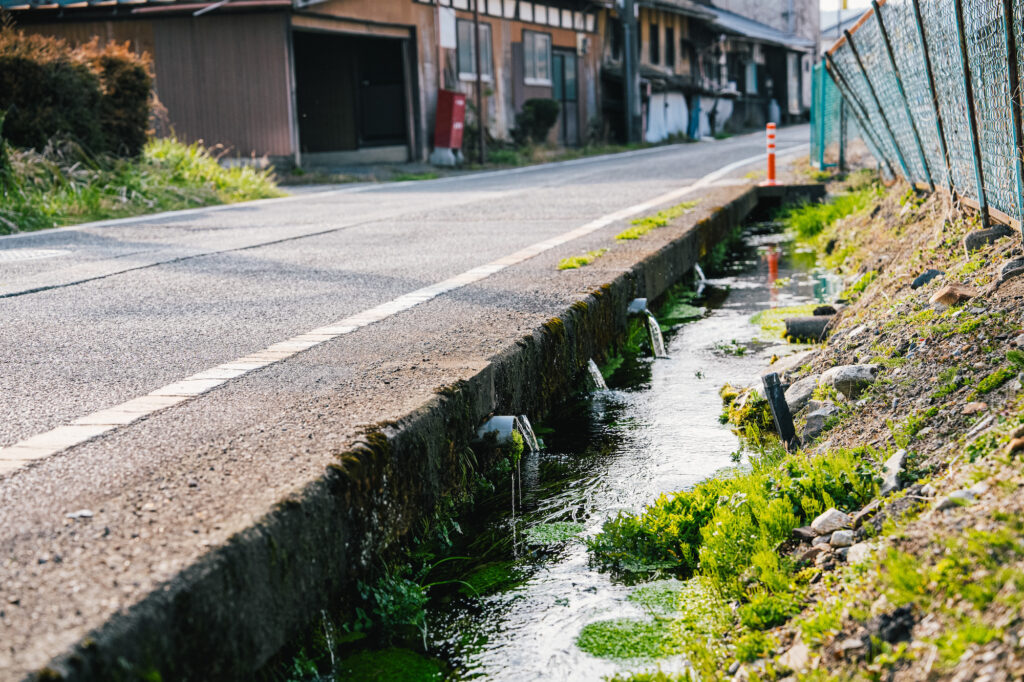
It is said that 60 to 70 percent of the human body is made up of water. Needless to say, water is vital for sustaining life, and water and humans are indissolubly linked. When we live in a world where water comes out of the tap when we turn it on, it may be difficult to comprehend that water is the shared wealth of all mortals. However, the residents of Harie keenly understand the connection between people and nature through the daily act of using water.
To visit Shiga Prefecture, home to Lake Biwa, is to witness the cycle of water and its many blessings. The toils of the local people, such as fishing, fermentation, manufacturing, and living, reveal the true nature of living beings, who live in harmony with others through the water. In the past, Omi merchants believed in “sampo yoshi,” meaning “everyone’s a winner”. The ethos of this business philosophy, which is to benefit the seller, the buyer, and society, may be a good model for all to follow, regardless of the era, region, or genre of business.
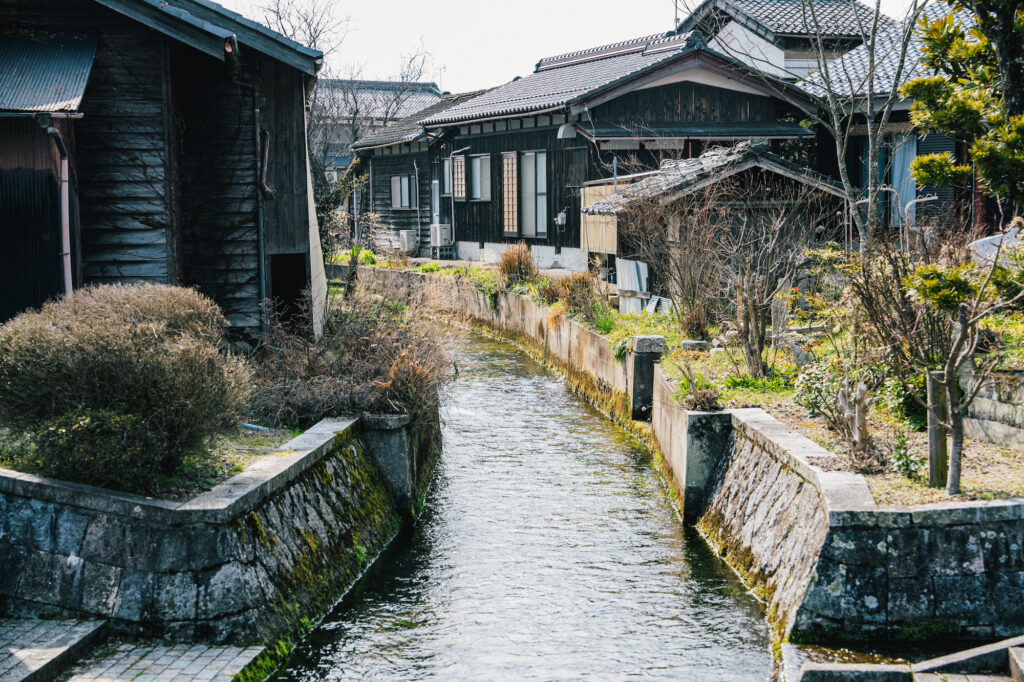
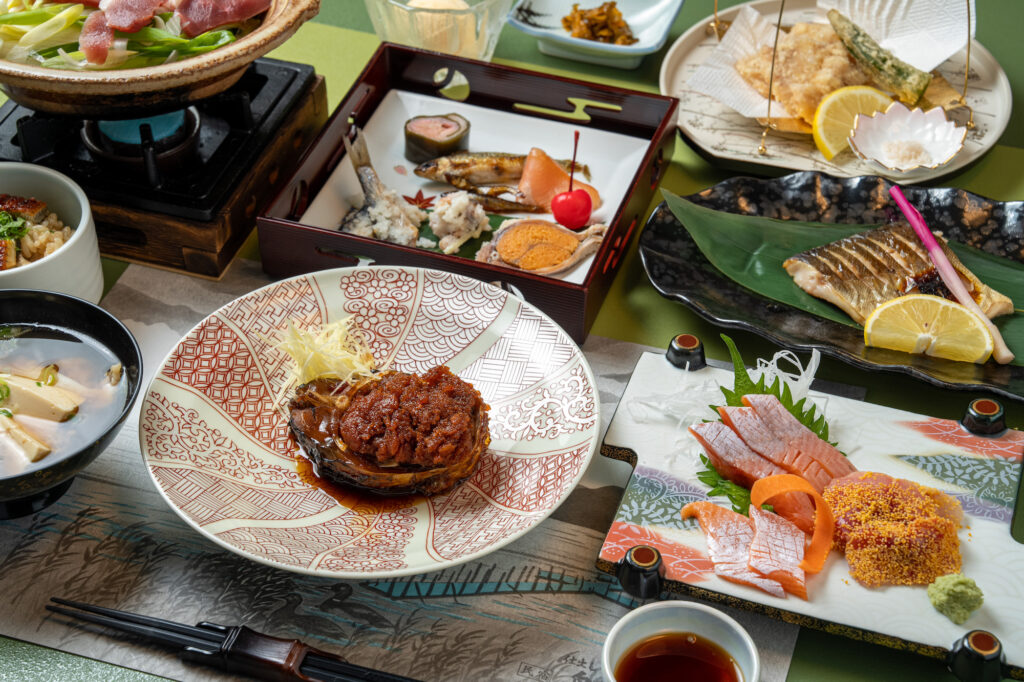
Funasou
https://funasou.com
Tokuyama Zushi
https://tokuyamazushi.com
Kojiya Kichiuemon
https://kojiya-kichiuemon.jp
Fuji Honke
https://www.fujiihonke.jp
“Harie Syozu no Sato” committee
https://harie-syozu.jp/
Lake Biwa Museum
https://www.biwahaku.jp











